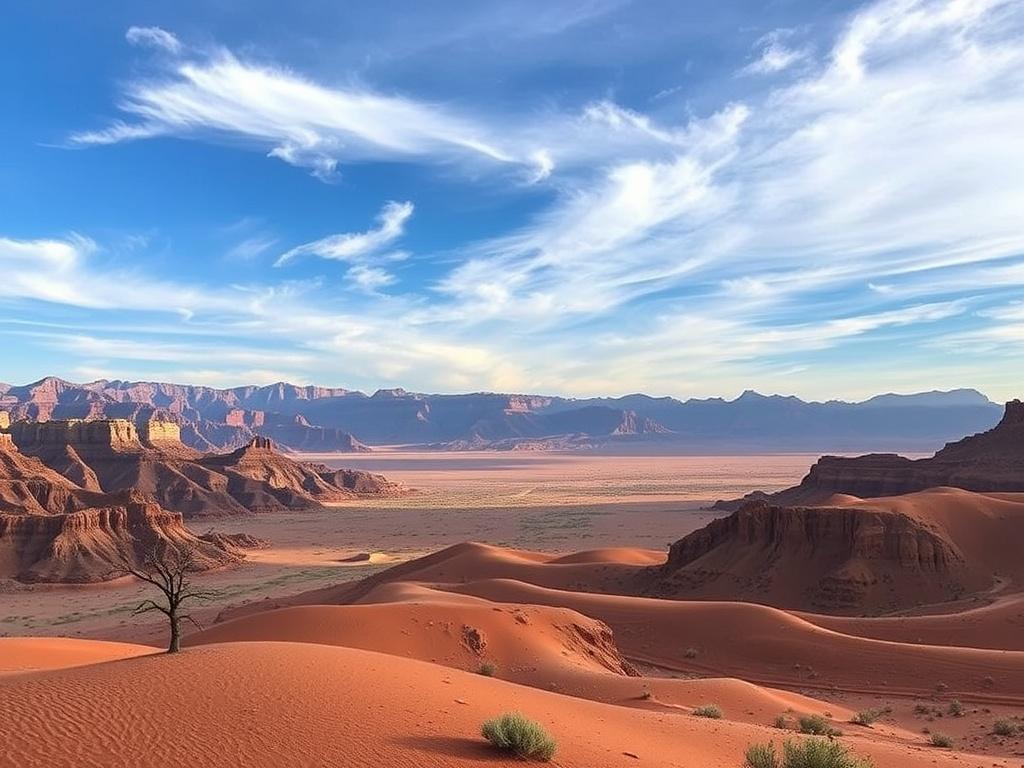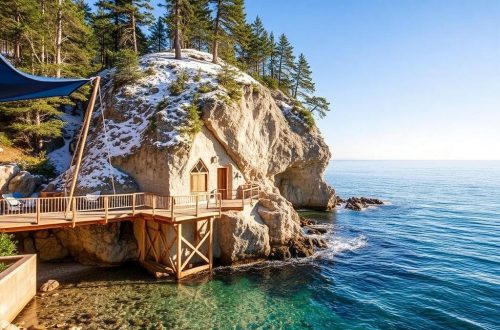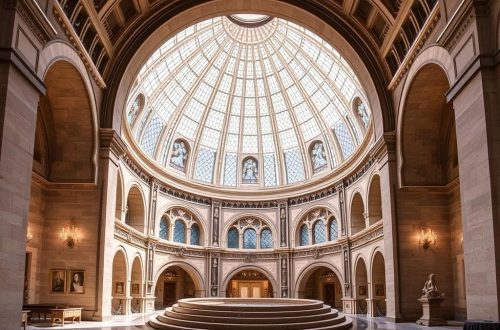
Most Beautiful Desert Landscapes: Exploring Nature’s Stunning Oases
Deserts often evoke images of endless sand dunes, harsh sunlight, and barren expanses, but the truth is far richer. The most beautiful desert landscapes on Earth reveal a surprising variety of colors, textures, and life forms that captivate travelers and nature lovers alike. From fiery red rock formations to vibrant flora that blooms against all odds, deserts offer a unique kind of beauty that challenges our usual definition of scenic landscapes. In this article, we will explore some of the most iconic and breathtaking desert regions around the world, diving into what makes them unforgettable and why they deserve a special place in our hearts and travel plans.
The Enchanting Sahara Desert
As the largest hot desert in the world, the Sahara Desert stretches across much of North Africa, covering parts of countries like Algeria, Chad, Egypt, Libya, Morocco, and Tunisia. When you think about the most beautiful desert landscapes, the Sahara often tops the list. Despite its intimidating size, the Sahara presents stunning displays of nature’s artistry. Towering sand dunes shift with the wind, creating waves of orange and red that contrast sharply with the deep blue of the sky.
One of the Sahara’s remarkable features is its diverse terrain. Aside from sand dunes, you’ll find rocky plateaus, salt flats, and jagged mountain ranges that offer a varied backdrop for exploration. Places like the Erg Chebbi in Morocco or the White Desert in Egypt showcase distinct landscapes that look almost otherworldly, perfect for adventurous photographers and explorers.
Key Highlights of the Sahara
- Erg Chebbi Dunes: Known for its large sand dunes, some reaching over 150 meters.
- White Desert: Famous for chalk formations that resemble alien sculptures.
- Acacus Mountains: Home to prehistoric rock art nestled amid desert plateaus.
- Unique Flora and Fauna: Despite its harsh climate, you can find desert foxes, camels, and various resilient plants.
The Majestic Atacama Desert – The Driest Place on Earth
If you’re in search of unusual beauty, the Atacama Desert in northern Chile offers some of the most extreme desert landscapes on the planet. Known as the driest non-polar desert in the world, the Atacama stretches across a thousand kilometers along the Pacific coast. Despite its extreme dryness, the Atacama boasts some of the most colorful and diverse desert scenes, including salt flats, geysers, volcanoes, and even snow-capped peaks.
One unforgettable spectacle in the Atacama Desert is the blooming of desert flowers that occurs after rare rains. These brief bursts of color turn the desert floor into a natural mosaic of purples, yellows, and reds. The Valle de la Luna (Valley of the Moon) is one of the most visited parts due to its moon-like surface, jagged canyons, and dramatic rock formations.
Atacama Desert Features
| Feature | Description |
|---|---|
| Valle de la Luna | Moon-like landscape with salt caverns and eroded rock formations |
| El Tatio Geysers | One of the highest geyser fields in the world, active at dawn |
| Salar de Atacama | Largest salt flat in Chile, home to flamingos and unique wildlife |
| Volcanoes | Surrounding peaks provide stunning panoramic views |
Arizona’s Painted Desert and Monument Valley
No list of the most beautiful desert landscapes would be complete without mentioning the American Southwest, especially Arizona’s Painted Desert and the iconic Monument Valley. This region offers vibrant colors and striking rock formations that have become emblematic of the American West. The Painted Desert earns its name from the swaths of colorful badlands with rich reds, pinks, purples, and grays created by ancient sediments.
Monument Valley is famous worldwide for its majestic sandstone buttes that rise like sentinels from the flat desert floor. These towering rock formations often feature in movies and photographs symbolizing the vastness and mystery of the desert. Beyond the visual spectacle, the region is rich in Native American culture and history, with Navajo guides offering insight into the land, its stories, and spiritual significance.
Why These Landscapes Stand Out
- Painted Desert: Spectacular geological formations and vibrant color contrasts.
- Monument Valley: Iconic rock buttes offering unforgettable vistas.
- Wildlife: Coyotes, lizards, and desert birds adapt beautifully to this landscape.
- Cultural Connection: Navajo heritage enriches the experience through storytelling and tours.
The Namib Desert – Africa’s Oldest Desert with Mesmerizing Dunes
In southwest Africa lies the Namib Desert, often considered the world’s oldest desert, with over 55 million years of desert conditions sculpting its remarkable landscapes. Stretching along the Atlantic coast of Namibia, this desert is best known for its towering sand dunes, such as those at Sossusvlei, which glow a brilliant red-orange during sunrise and sunset.
Sossusvlei itself is a clay pan surrounded by some of the highest dunes in the world, standing as tall as 300 meters. This region is a photographer’s paradise, where the desert’s warm hues contrast with deep blue skies and occasional salt pans. The stark beauty of the Namib Desert is also home to surprising life, including oryx, desert-adapted elephants, and the famous Welwitschia plant, a living fossil.
Highlights of the Namib Desert Landscape
| Feature | Description |
|---|---|
| Sossusvlei Dunes | Massive red sand dunes famous for dramatic light at dawn and dusk |
| Dead Vlei | White clay pan with dead camel thorn trees, creating stark and surreal contrasts |
| Welwitschia Plant | Ancient plant species that survives in extreme arid conditions |
| Desert Fauna | Unique animals adapted to harsh desert conditions, e.g., oryx and elephants |
The Thar Desert: Vibrant Life in the Heart of India and Pakistan
Stretching across northern India and eastern Pakistan, the Thar Desert presents a fascinating contrast to many deserts’ barren stereotypes. Frequently called the «Great Indian Desert,» this arid region bursts with cultural richness, colorful festivals, and traditional desert settlements. The Thar Desert’s beauty comes not only from its sand dunes and rocky outcrops but also from vibrant human life and resilient vegetation.
During the cool winter months, the desert transforms into a place of colors and celebrations. The annual desert festival in Jaisalmer, India, highlights folk music, dance, camel races, and traditional art, providing a unique desert landscape infused with human warmth and culture. Additionally, the desert supports thorny shrubs and scrub forests, hosting various birds and mammals despite the arid environment.
What Makes the Thar Desert Unique
- Cultural Richness: Traditional desert communities keep ancient crafts and celebrations alive.
- Topography: Rolling sand dunes combined with rocky landscapes and dry riverbeds.
- Wildlife: Includes desert foxes, chinkara gazelles, and a variety of bird species.
- Festivals: Annual desert festivals bring a burst of color and music.
Distinctive Characteristics of the Most Beautiful Desert Landscapes
When you compare deserts from all around the world, some shared qualities make them spectacular despite their differences. Here’s a quick look at what you can expect when visiting these awe-inspiring places.
| Aspect | Description |
|---|---|
| Visual Diversity | From golden sands to salt flats, rocky plateaus, and colorful badlands. |
| Flora and Fauna | Adapted plants and animals that thrive under tough desert conditions. |
| Climate Extremes | Harsh temperatures with dramatic changes between day and night. |
| Cultural Connection | Many deserts are home to indigenous peoples with rich histories and traditions. |
| Unique Natural Phenomena | Desert blooms, mirages, rock formations, and rare water bodies highlight the magic of these regions. |
Tips for Experiencing Desert Landscapes
Exploring deserts can be an unforgettable experience if done thoughtfully. Here are some handy tips to make the most of your desert adventure:
- Timing is Everything: Visit during cooler months or early mornings to avoid extreme heat.
- Stay Hydrated: Always carry plenty of water and wear protective clothing.
- Respect Local Culture: Learn about indigenous peoples and their traditions.
- Photography: Golden hours (sunrise and sunset) offer the best light for desert landscapes.
- Explore with Guides: Knowledgeable guides enhance your understanding and safety.
Other Noteworthy Desert Landscapes Worth Exploring
Besides the deserts we have discussed in detail, the world boasts many other stunning arid regions that showcase the diversity and beauty of deserts:
- Gobi Desert (Mongolia/China): Known for its vast steppes and unique cold desert environment.
- Sonoran Desert (Arizona/Mexico): Features the iconic saguaro cactus and rich biodiversity.
- Rub’ al Khali (Empty Quarter, Arabian Peninsula): The largest contiguous sand desert with mesmerizing dune seas.
- Simpson Desert (Australia): Famous for crimson sand dunes and red center landscapes.
Summary Table of Notable Desert Landscapes
| Desert | Location | Distinctive Feature |
|---|---|---|
| Sahara | North Africa | Vast dunes and prehistoric rock art |
| Atacama | Chile | Driest desert with lunar landscapes |
| Painted Desert / Monument Valley | Arizona, USA | Colorful badlands and iconic rock buttes |
| Namib | Namibia | Tall red dunes and living fossils |
| Thar | India/Pakistan | Colorful culture and rolling dunes |
| Gobi | Mongolia/China | Cold desert with steppes |
Conclusion
The most beautiful desert landscapes challenge our perceptions of what nature’s artistry can be. These deserts, from the Sahara to the Namib and the Atacama to the Thar, showcase a remarkable blend of raw beauty, cultural richness, and ecological resilience. Whether it’s the imposing red dunes of Sossusvlei, the otherworldly white chalk formations in Egypt, or the vibrant colored badlands of Arizona, deserts have an allure that goes beyond their harsh conditions. They invite us to slow down, appreciate subtle changes in light and color, and connect with ancient stories etched in stone and sand. Exploring these landscapes is not just a journey across arid lands but a profound experience that enriches our understanding of nature, culture, and the enduring spirit of life in the world’s most extraordinary deserts.




